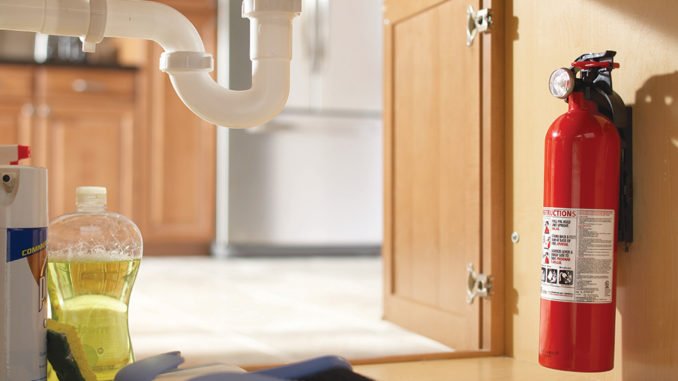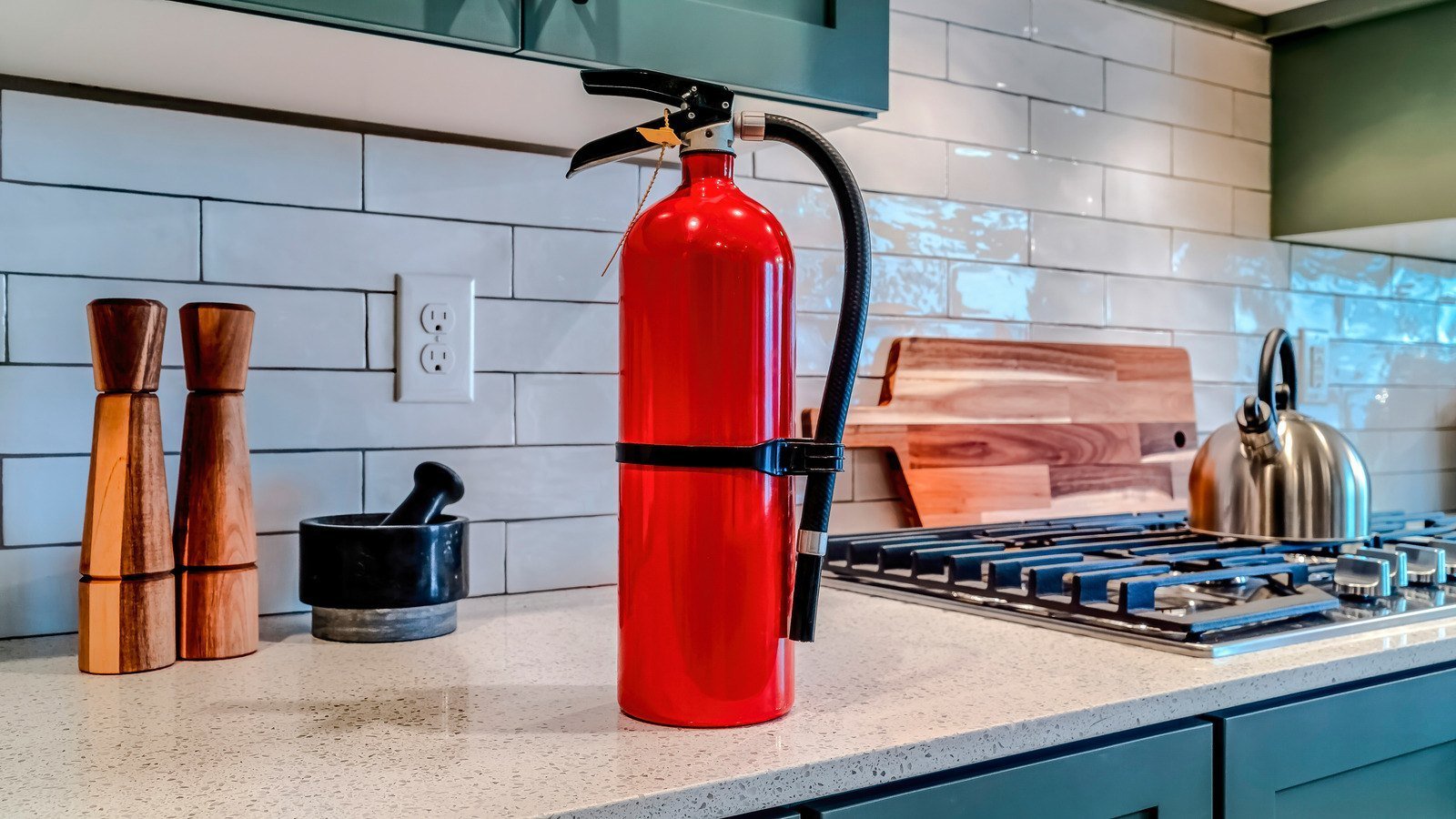The kitchen is often regarded as the heart of the home, where families gather to share meals and create memories. However, it is also one of the most common places for fires to occur. The importance of kitchen fire extinguishers cannot be overstated, as these devices play a critical role in safeguarding both property and lives from the dangers associated with kitchen fires.
Kitchens are prone to specific types of fires, primarily caused by cooking-related activities. Grease fires, for instance, can ignite when hot oil or fats reach their flash point. These fires can spread rapidly, transforming a typical cooking scenario into a hazardous situation if not addressed immediately. Additionally, electrical fires may occur due to faulty appliances or worn-out wiring, further heightening the risk of fire in this environment. Ignoring the potential for such events can result in devastating consequences, including extensive property damage or, worse, serious injury or loss of life.
Inadequate fire safety measures can exacerbate these risks. Many individuals underestimate the significance of having proper emergency equipment readily available in their kitchens. Without kitchen fire extinguishers, homeowners may find themselves unprepared in the event of an emergency, leading to panic and potentially harmful decision-making during critical moments. The lack of a suitable fire extinguisher can result in a minor incident escalating into a full-blown disaster, causing lasting repercussions for the entire household.
To effectively combat kitchen fires, it is essential to have a fire extinguisher that is specifically designed for kitchen-related incidents, such as those categorized as Class K for grease fires. Educating oneself and family members on the proper use of kitchen fire extinguishers is equally important, as readiness can mean the difference between a controlled situation and a life-threatening emergency.
Types of Kitchen Fire Extinguishers
When it comes to protecting your kitchen from fire hazards, understanding the different types of fire extinguishers is crucial. There are four main classes of fire extinguishers that are pertinent to kitchen use: Class A, Class B, Class C, and Class K. Each class is designed to tackle specific types of fires, and knowing their applications can aid in making the right choice for home kitchen safety.
Class A extinguishers are effective against ordinary solid combustibles such as wood, paper, and cloth. While they are not specifically designed for kitchen fires, they can be useful in a broader kitchen context where these materials might be present. However, they are not the primary choice for grease fires.
Class B extinguishers are suitable for fires involving flammable liquids such as grease, oils, gasoline, and solvents. This class is particularly important for kitchen environments, as cooking oils can ignite and lead to dangerous flare-ups. It is recommended to keep a Class B fire extinguisher in kitchens that use oils frequently for frying or sautéing.
Class C extinguishers are designed to fight electrical fires. Given the prevalence of electrical appliances in modern kitchens, having a Class C extinguisher is essential for addressing fires caused by short circuits or overheating devices. It is vital to avoid using water on electrical fires as this could exacerbate the situation.
Lastly, Class K extinguishers are tailored specifically for fires that occur in cooking appliances involving combustible cooking media, such as vegetable or animal oils and fats. Class K extinguishers contain a special agent that effectively cools the flames and prevents reignition, making them indispensable in commercial kitchens and increasingly important for residential use as well.
By understanding these different types of kitchen fire extinguishers, one can make informed decisions about fire safety and choose the most appropriate extinguisher for their culinary space.

How to Properly Use a Kitchen Fire Extinguisher
Utilizing a kitchen fire extinguisher effectively can significantly mitigate the effects of a fire within your home. First, it is important to remember the PASS technique, which stands for Pull, Aim, Squeeze, and Sweep. Following these steps ensures the safe and efficient application of the extinguishing agent.
To begin, you must Pull the pin located at the top of the extinguisher. This action breaks the tamper seal and allows you to discharge the contents. Next, while holding the extinguisher upright, you should Aim the nozzle at the base of the fire, as targeting the flames directly will not be effective. After you have your aim set, you can Squeeze the lever slowly and evenly to release the extinguishing agent; do not release it too quickly, as this could lead to inefficient dispersal. Finally, you should Sweep the nozzle from side to side, ensuring the agent covers the affected area thoroughly until the flames are completely extinguished.
Common mistakes can lead to disastrous outcomes. One significant error is using the extinguisher incorrectly; for instance, aiming at the flames rather than the base can leave the fire unaddressed. Additionally, failing to maintain a safe exit path while combating the fire puts individuals at risk. If the fire begins to grow rapidly or if smoke fills the area, it is crucial to evacuate rather than attempt to control the fire. Always remember that when in doubt about the fire’s intensity or your safety, prioritizing evacuation is the safest course of action.
Proper training and preparedness play vital roles in successfully managing a fire in the kitchen. Always ensure that a suitable kitchen fire extinguisher is readily accessible and that everyone in the household understands how to use it effectively.
Maintenance and Accessibility of Kitchen Fire Extinguishers
Maintaining kitchen fire extinguishers is crucial to ensuring they function properly in case of a fire emergency. Regular inspections and appropriate storage are essential components of fire safety within the home. It is generally recommended to inspect kitchen fire extinguishers at least once a month. During these inspections, homeowners should check the pressure gauge to confirm that it is within the acceptable range, typically indicated by the color-coded zone on the gauge. Additionally, it is important to ensure that the extinguisher is free from corrosion, leaks, or any physical damage that could hinder its operation.
Significantly, homeowners should also pay attention to the expiration dates. Many fire extinguishers have a lifespan of 5 to 15 years depending on the type. If the extinguisher is showing signs of aging or has reached its expiration date, it is advisable to replace it promptly to guarantee effective protection against kitchen fires. Furthermore, it may be beneficial to familiarize oneself with the manufacturer’s guidelines regarding maintenance and service requirements, as these can vary by brand and model.
Accessibility is another critical aspect of fire safety. Kitchen fire extinguishers should be stored in a location that is easy to reach during an emergency. Ideally, they should be mounted on the wall, near the kitchen exit, or in an area where they can be easily accessed without having to navigate through smoke or flames. It’s also advisable to ensure that all family members are aware of the extinguisher’s location and how to operate it correctly. Educating family members about this can save precious seconds during a fire emergency, potentially preventing the situation from escalating.
By adhering to these maintenance and accessibility guidelines for kitchen fire extinguishers, homeowners can greatly enhance their fire safety preparedness, protecting themselves, their families, and their property.

